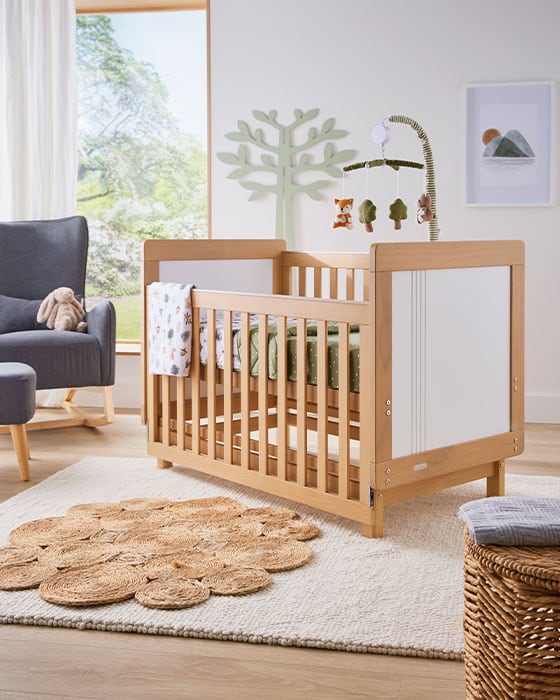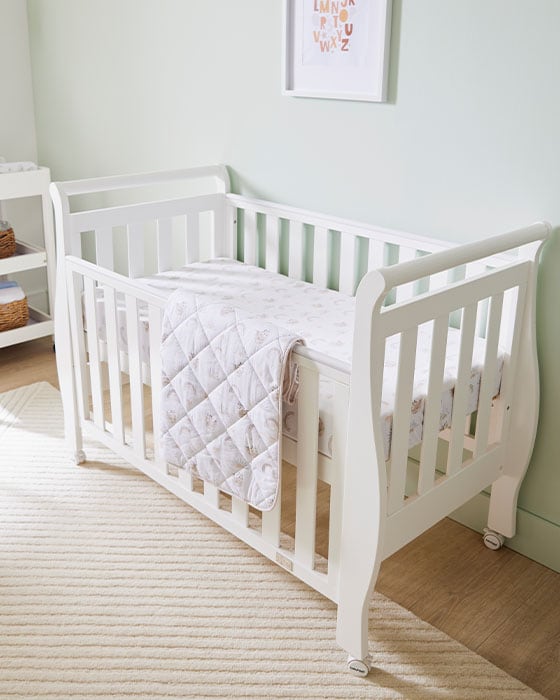
With so much contrasting and conflicting information out there around buying drop-side cots over fixed-side cots, it ultimately comes down to personal preferences.
Although the use of drop-side cots are different overseas, they are used in New Zealand but must comply with product safety requirements.
A protective plastic coating around the edges prevents your baby chewing on the wooden slats of the cot.
Some cots can be used as a bassinet for newborns (by adjusting the base height), and later convert to a day bed or toddler bed. These options come in handy as your child grows and can give you years of extra use.
Makes it easier to lift your baby in and out as they grow. The base can be positioned at the higher setting for newborns, then should be adjusted to the lower setting when your baby is close to sitting up, so that they stay secure in the cot.
Sturdy wheels allow ease of movement with the cot. This can allow easy cleaning under the cot or the ability to move the cot to different rooms if required.

While cots can be used from birth, some parents choose to purchase a bassinet for their babies.
Bassinets are ideal for newborns to around 6 months old as they're smaller and can be easily moved around the house, especially those featuring wheels. Bassinets are particularly useful if you choose to have your baby sleep in your room.
See the Bassinet Buying Guide for more information.
Check with the Ministry of Consumer Affairs or your local Plunket service if you have any safety concerns about your cot or require further advice. The Commerce Commission enforces the Household Cots Product Safety Standard.